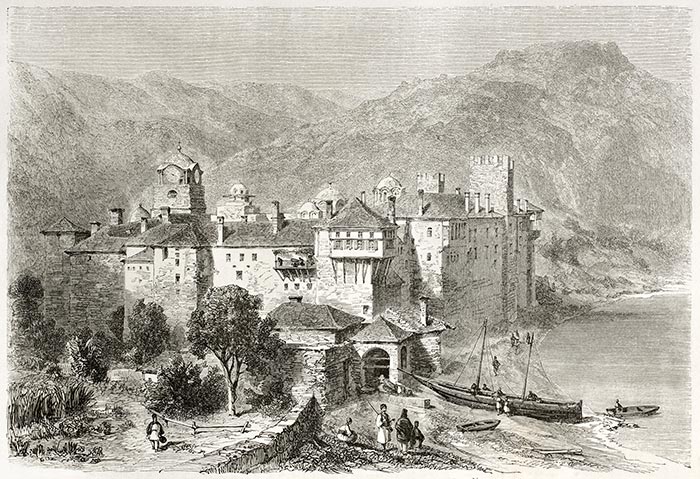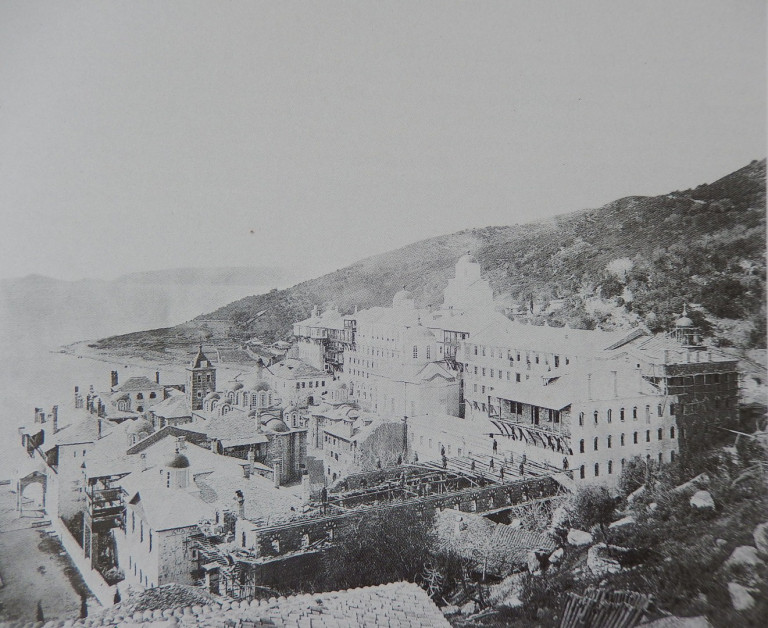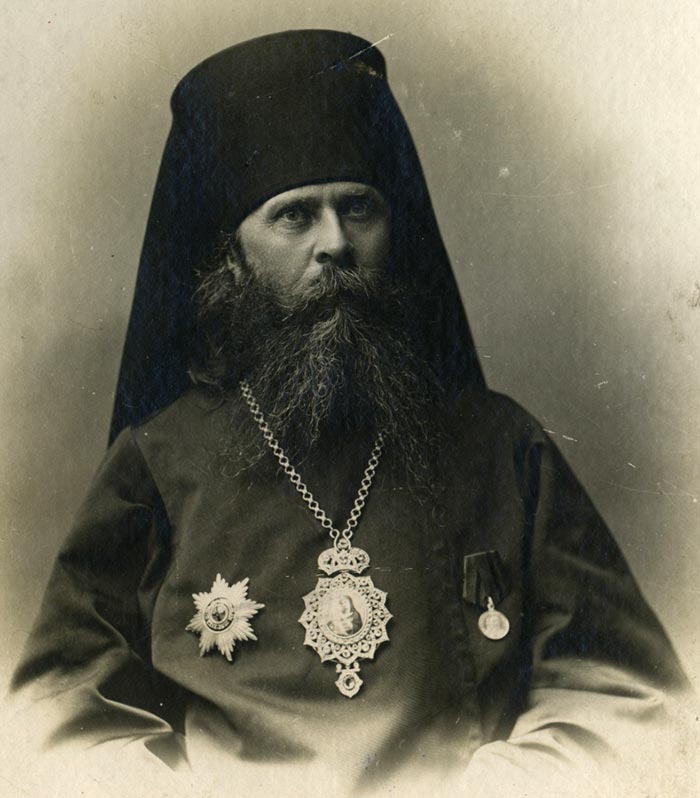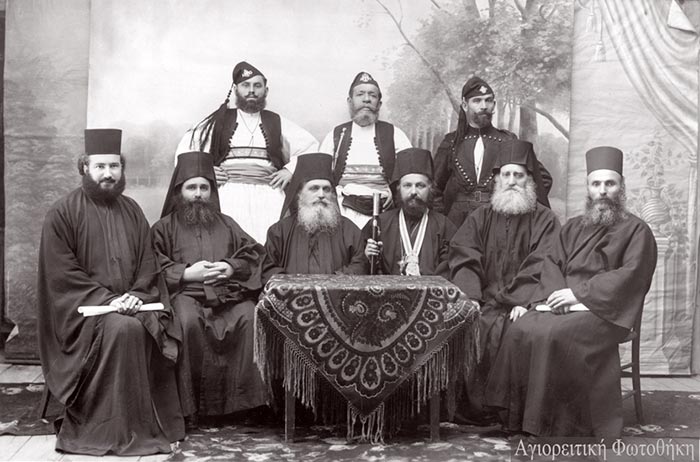
The History Of Mount Athos (19th century - 20th century)
During the Greek War of Independence the monasteries were occupied by the Ottoman Turks, after an unsuccessful revolt lead by Emanuel Pappas, in May 1821. Three garrisons were established until 1830, Capodistrias, the first Governor of the new Greek State, managed to recover some of the estates that had hastily been sold in order to defray the expenses of the Turkish garrison.

The population of monks and their wealth partially were revitalized during the 19th century, particularly by the patronage of the Russian government. Russian monks took over the monastery of Panteleimon, elected their own abbot and spread further to numerous cells and skites as their number was growing continuously. As a result, the monastic population grew steadily throughout the century, reaching at some point 5000 Russian monks against 4000 Greek monks.
In November 1912, during the First Balkan War, the Ottomans were forced out by the Greek Navy. Greece claimed the peninsula as part of the peace treaty of London signed on 30 May 1913. As a result of the shortcomings of the Treaty of London, the Second Balkan War broke out between the combatants in June 1913. Finally, peace was agreed at the Treaty of Bucharest on 10 August 1913.

In June 1913, a small Russian fleet, consisting of the gunboat Donets and the transport ships Tsar and Kherson, delivered the archbishop of Vologda and a number of troops to Mount Athos to intervene in the theological controversy over imiaslavie (a Russian Orthodox movement).
The archbishop held talks with the imiaslavtsy and tried to make them change their beliefs voluntarily, but was unsuccessful. On 31 July 1913, the troops stormed the St. Panteleimon Monastery. Although the monks were not armed and did not actively resist, the troops showed very heavy-handed tactics.
After the storming of St. Panteleimon Monastery, the monks from the Andreevsky Skete (Skiti Agiou Andrea) surrendered voluntarily. The military transport Kherson was converted into a prison ship and more than a thousand imiaslavtsy monks were sent to Odessa where they were excommunicated and dispersed throughout Russia.

After a brief diplomatic conflict between Greece and Russia over sovereignty, the peninsula formally came under Greek sovereignty after World War I. All that remained was to settle the legal dispositions of Greece's relations with the Holy Mountain and to draw up an internal rule for the governance of the monastic community.
In 1924 a five-member committee of eminent Athonites prepared the 'Charter for the Holy Mountain of Athos', which codified regulations and administrative dispositions stemming not only from written sources (Typika, chrysoboulla, sigillia, regulations, etc.) but also from tradition and customary usage. This Charter was approved that same year by the Athonite Assembly known as the 'double Synaxis'.
On the basis of this official text the Greek state drafted a Legislative Decree, which the Greek Parliament passed into law in 1926. At the same time, the 1927 Greek Constitution contained special articles (included in each subsequent constitution) on the general principles governing the status of Mount Athos.
These were the official documents defining the peninsula's relations with Greece and with the Church, as well as the competence of its administrative institutions, the Holy Synaxis (Community) and the Holy Epistasis (Supervision). They also regulated relations between monks, between monk and monastery, between monastery and dependency, etc., in order to prevent friction and disputes.

During the 20th century the population of monks shrunk considerably. Few young monks were arriving to the Mount Athos, few gerondes (elders) were left in the monasteries, which were slowly dilapidating. Political instability in Greece during the mid-20th century that affected Mount Athos included Nazi occupation from the Easter season of 1941 through late 1944, followed immediately by the Greek Civil War.
After the Nazi takeover of Greece, the Holy Supervision (Ιερά Επιστασία – Iera Epistasia), Athos's four-member executive committee, formally asked Germans to place the Autonomous Monastic State under protection, and Germans agreed. Mount Athos survived World War II nearly untouched.
The 1000th anniversary of Holy Mount in 1963 was attended by all heads of the Eastern Orthodox Churches. Since 1972 slowly but steadily the number of monks started to grow. More and more young well-educated monks are arriving, monasteries are receiving help, donations from inside Greece and from abroad. The number of monks is over 2000 and is continuing to grow.
Read More
The history of Mount Athos: Antiquity & Mythology
The history of Mount Athos from the 4th century to the 14th century
The history of Mount Athos from the 15th century to the 18th century


